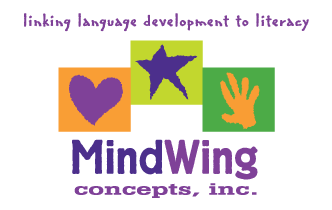Secure Checkout. FREE SHIPPING for Continental U.S. Orders over $60.
Menu
-
- Home
-
About Us
-
The Approach
-
Linking Language & Literacy
-
Professional Learning
-
Learning Resources
-
SHOP
-
Blog
-
- About MindWing
- Our People
- Contact Us
- Your Account
- Login
-
United States (USD $)

Secure Checkout. FREE SHIPPING for Continental U.S. Orders over $60.
Tech Tuesday: Story-Form Directions and Play!
by Sean Sweeney December 19, 2022 2 min read
 Being told what to do is often no fun. But for many of us targeting language development objectives, we have to deal with our students’ potentially low scores on assessments such as the CELF-5s Following Directions subtest. Key to success on activities such as these are student’s listening skills and understanding of concepts related to time, space, number, and sequence, among others.
Being told what to do is often no fun. But for many of us targeting language development objectives, we have to deal with our students’ potentially low scores on assessments such as the CELF-5s Following Directions subtest. Key to success on activities such as these are student’s listening skills and understanding of concepts related to time, space, number, and sequence, among others.
The good news is that these concepts are everywhere and can be targeted through stories and play! One way I have been approaching this is through the Toca Life: World app, (previously discussed here). The app is available for multiple platforms as you can see, and you can either purchase individual “Settings” (e.g., Toca Life: Vacation, which I like to refer to with colleagues as “The White Lotus,” [from HBO’s series of vacations-gone-wrong]), or connect purchased apps through the World app. The World app also has mini-settings you can purchase for short money, for example, a ski resort.
 I have been using the book Where’s Walrus? by Stephen Savage with students recently (video here) (recall: using picture books on YouTube can work wonderfully with heavy use of the pause button). It forms a great Complete Episode narrative you can scaffold with Story Grammar Marker® but also is a nice context for labeling settings and looking for other situational clues.
I have been using the book Where’s Walrus? by Stephen Savage with students recently (video here) (recall: using picture books on YouTube can work wonderfully with heavy use of the pause button). It forms a great Complete Episode narrative you can scaffold with Story Grammar Marker® but also is a nice context for labeling settings and looking for other situational clues.
Naturally, this fits well with Toca Life playsets such as the Aquarium, available in World (feel free to use any other book and app context pairing, though!).

Many objects in Toca World are interactive, meaning you can move characters, give them things to hold, wear, etc. My students love this app and one particularly likes “free time” with it, which I always make trick-therapy-time by using parallel talk and other interactions as he plays. I realized recently that I can leverage this interest by giving him a few “directions” to follow, and framing them as short stories that contain vocabulary and concepts that he is working on. Here’s an example, made with Google Slides along with some screenshots as visual supports:

An additional scaffold can be placing the directions in story form with Story Grammar Marker®. The first one could look like this:
|
|
My student enjoyed this quite a lot and benefited from the scaffolds. He, of course, loved the “free play” time for which I put on the Guided Access iPad timer to avoid any struggles in transition. Hope you find this suggestion helpful!
Sean Sweeney
Sean Sweeney, MS, MEd, CCC-SLP, is a speech-language pathologist and technology specialist working in private practice at the Ely Center in Needham, MA, and as a clinical supervisor at Boston University. He consults with local and national organizations on technology integration in speech and language interventions. His blog, SpeechTechie (www.speechtechie.com), looks at technology “through a language lens.” Contact him at sean@speechtechie.com.
Leave a comment.
Comments will be approved before showing up.
